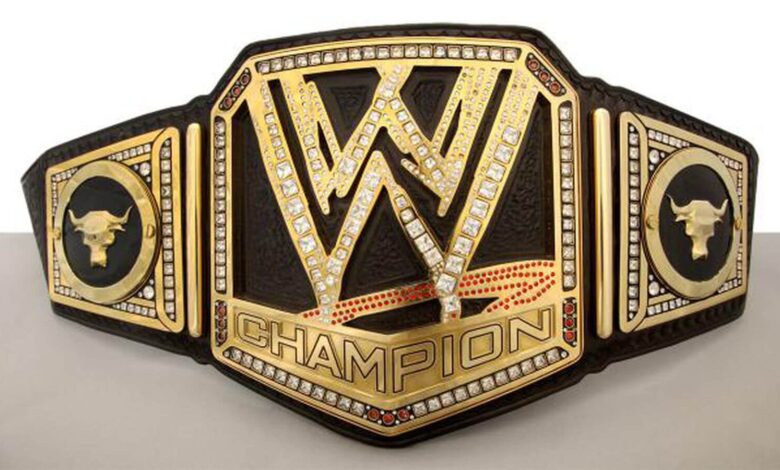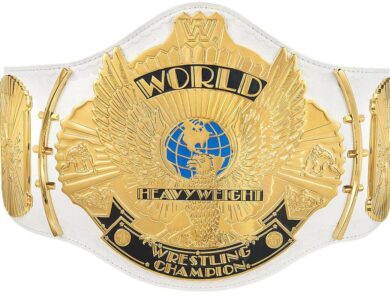
In the world of professional wrestling, few things hold as much prestige and symbolism as the championship belt. The WWF (World Wrestling Federation, now known as WWE – World Wrestling Entertainment) has a storied history, and its championship belts have evolved over the years, reflecting the changing face of the wrestling world. In this article, we will take a deep dive into the evolution of the WWF Championship belt and explore its visual history.
The Inception of the Championship Belt
The history of the WWF Championship belt dates back to the 1960s when Buddy Rogers became the inaugural WWF World Heavyweight Champion in April 1963. The first championship belt, often referred to as the “Nature Boy” belt, featured a relatively simple design compared to the ornate belts we see today. It was a basic gold-plated design with minimal adornments.
The Belt of the ’70s
As professional wrestling’s popularity soared in the 1970s, the WWF Championship belt underwent several transformations wwf championship belt. In this era, the belt featured a classic design, with a large circular centerpiece displaying the WWF logo. The belt had a more substantial feel, with prominent etchings and leather straps.
WWF Championship the ’80s: The Golden Era
The 1980s marked the golden era of professional wrestling and the WWF Championship belt continued to evolve. This period saw the introduction of the iconic “Hogan 86” belt, closely associated with the legendary Hulk Hogan. This version of the belt was bigger, more lavish, and more reflective of the larger-than-life personalities dominating the WWF at the time. It featured a massive eagle with outstretched wings and a colorful globe in the center, representing the global reach of the WWF.
The ’90s: The Attitude Era
The 1990s brought about the infamous Attitude Era in wrestling, and the WWF Championship belt changed to match the edgier, more rebellious tone of the promotion. The belt design introduced in this era, often called the “Big Eagle” belt, featured an enormous eagle with a fierce expression and a more prominent globe. The design was flashier and boasted a mix of gold and silver, emphasizing the grandeur of the championship.
Stone Cold Steve Austin, The Rock, and other iconic figures of the Attitude Era proudly wore this championship belt, solidifying its place in wrestling history.
The Ruthless Aggression Era
As the WWF transitioned into the Ruthless Aggression Era in the early 2000s, the championship belt design evolved once more. The belt was updated with a modernized, cleaner look. The eagle emblem remained but was streamlined and simplified. The leather straps were thicker and more durable, reflecting the changing times in professional wrestling. Superstars like Brock Lesnar and Kurt Angle carried this championship.
The Spinner Belt Era
Perhaps one of the most polarizing championship belt designs in WWE history was the Spinner Belt, introduced during the 2005 John Cena era. Cena’s custom belt featured a massive spinning WWE logo in the center. While the design received mixed reviews, it undeniably left a lasting impression.
The PG Era and Beyond
With the shift towards a more family-friendly product in the PG era and beyond, the WWE Championship belt evolved yet again. This version, sometimes referred to as the “Viper” belt, was introduced in 2014. It featured a large, stylized WWE logo with a snake wrapped around it, representing the snake motif associated with Randy Orton, who held the title at the time. This design was sleek and elegant, in line with the more modern aesthetics of the era.
The Current WWE Championship Belt
In 2019, the WWE Championship belt received a major facelift. The current design, which is still in use as of my last knowledge update in September 2021, features a polished gold WWE logo with a silver globe in the center professional wrestling championship. The eagle motif has been eliminated in favor of a cleaner, more contemporary look. The leather straps also received a sleek update, making this belt a perfect representation of the company’s current branding.
Conclusion
The WWF Championship belt has undergone a fascinating evolution throughout its storied history, mirroring the shifts in the world of professional wrestling. From its humble beginnings as the “Nature Boy” belt to the grandiose designs of the ’80s and ’90s, and the more streamlined looks of the 2000s and beyond, the championship belt serves as a visual timeline of WWE’s journey.
It’s important to note that my knowledge only extends up to September 2021, and the WWE is known for its frequent changes and updates. As a result, it’s entirely possible that the championship belt design may have evolved further since that time. Regardless of the changes, one thing remains constant: the WWF/WWE Championship belt continues to be a symbol of excellence and prestige in the world of professional wrestling.




